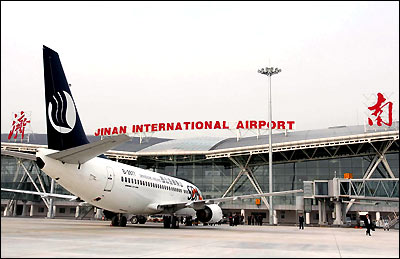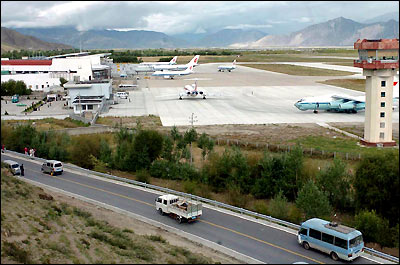| Home / China / Photos / National | Tools: Save | Print | E-mail | Most Read |
| Airport Spending Ready for Takeoff |
| Adjust font size: |
In the next five years China is set to spend more on airport development than it has in the last 15 which will open up significant investment opportunities for domestic and overseas investors.
According to the Civil Aviation Administration of China (CAAC), the industry regulator, 140 billion yuan (US$17.4 billion) has been earmarked from this year to 2010 for airport development compared to the 120 billion yuan (US$14.8 billion) from 1990 to last year.
The spending will be centered on 42 new airports and upgrading existing infrastructure.
Zhao Hongyuan, a senior CAAC official, told China Daily the number of airports would rise to 190 from the current 142 with the figure reaching to 220 by 2020. The fleet strength of commercial aircraft will grow to 1,580 by 2010, up from the current 863, before reaching approximately 4,000 in 2020.
The first step is to strengthen Beijing, Shanghai and Guangzhou airports as key international hubs. The CAAC also wishes to see Chengdu, Kunming, Xi'an, Wuhan and Shenyang become regional hubs.
It's not just the developed coastal and eastern areas which will hog the funds as other regions will also get a big chunk of the spending pie.
For example, southwest China's Yunnan Province plans to invest more than 20 billion yuan (US$2.5 billion) in airport projects in the next five years, accounting for nearly one-seventh of the country's total, Xinhua News Agency reported.
By 2010 the province will have 15 airports -- currently there are 10 -- forming a comprehensive network linking all parts of Yunnan with the rest of the world especially southeastern and southern Asia.
"All the projects, national or local, will offer opportunities for investors at home and abroad," said Zhao.
German airport operator, Fraport, recently bought a 25 percent stake in east China's Ningbo airport and is in talks for an even bigger stake in Xi'an's Xianyang airport in northwest China.
Experts say airport development is vital to keep pace with the soaring level of air traffic. Last year domestic airlines carried 138 million passengers, up 15.5 percent from the previous year, and 3.4 million tons of cargo, a rise of 13.8 percent.
The CAAC said it expected passenger and cargo traffic to grow at an average of 14 percent annually until 2010 with yearly growth slowing to 11 percent between 2011 and 2020.
"The current number of airports does not match the present and long-term needs of China," said Gao Jinhua, professor at Tianjin School of Civil Aviation Management.
According to CAAC figures there are just 142 certified airports to serve a population of over 1.3 billion. In comparison, the United States, with 270 million people, has 14,807 airports and Australia with a population of just over 20 million has 444.
"The challenge is not only to increase the number of airports but to improve existing infrastructure as well," said Gao.
The World Tourism Organization estimated recently that China would be the fourth-largest international source of leisure travelers by 2020 and predicted about 100 million international Chinese tourists that year. They've also said the country would become the world's top inbound tourist destination the same year.
But of the current 142 airports only 25 are equipped to handle large aircraft like the Boeing 747.
(China Daily May 9, 2006)
|
| Tools: Save | Print | E-mail | Most Read |
 |
| Related Stories |


